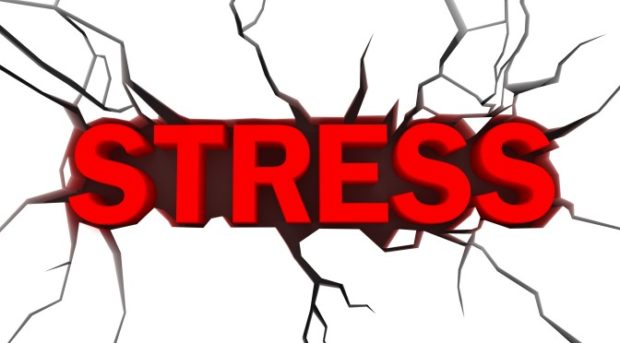For the World Health Organization (WHO) the waist or waist should measure less than 80 cm for women and less than 94 cm for men. The greater these values, the higher the risk of developing diseases cardiovascular. Check your waist, then, it means not only stay in shape, but also healthy. With a common tape measure, inelastic , you can measure :
cardiovascular. Check your waist, then, it means not only stay in shape, but also healthy. With a common tape measure, inelastic , you can measure :
Positioned in front of a mirror , you can avoid measurement errors : the abdomen should be bare and the metro at waist level, horizontal line, parallel to the floor.
Remember again that the waist is the narrowest part of the abdomen (that normally is located immediately above the upper edge of the iliac crests)
If life is not evident we must take as a reference point the navel. The tape must always be in a line parallel to the floor.
But why, over the years the waist can evolve and expand?
With advancing age the shape of the body begins to change: It increases the waist and lose muscle tone, conditions determined by several factors such as the reduction of the basal metabolic rate, that is the number of calories consumed by the body at rest to maintain vital functions. The metabolism is reduced and as a result you should also reduce your daily calories ingested. We continue, instead, eating inevitably increases weight and waist. Le donne, in addition to, with menopause they are more subject to an increase in the waistline, instead of the circumference of the legs and thighs, as in the fertile period, because of hormonal changes.
Caution, then, Also stress. Rhythms tightened, anxiety and tension can help to increase abdominal girth.
"The Stress is definitely an important factor in the waist, indeed, It leads us to eat more and to assimilate more, because of neuropeptide Y which acts to level of the peripheral nerves that innervate the adipose tissue. The stress activates the release of neuropeptide Y which stimulates the accumulation of fat. To prevent that from happening, when you are too stressed, you need to enjoy a moment of relaxation such as a nice walk, yoga, a massage, or any activity that allows us to stay away from the refrigerator and the pantry.
Stress is definitely an important factor in the waist, indeed, It leads us to eat more and to assimilate more, because of neuropeptide Y which acts to level of the peripheral nerves that innervate the adipose tissue. The stress activates the release of neuropeptide Y which stimulates the accumulation of fat. To prevent that from happening, when you are too stressed, you need to enjoy a moment of relaxation such as a nice walk, yoga, a massage, or any activity that allows us to stay away from the refrigerator and the pantry.
But what to do to counter or to slim the waistline?
Not all body fat is dangerous. The typically female fat, for example, place on the hips and thighs, It does not represent a serious health hazard. Instead the fat within the abdominal, typically male, the so-called "belly", It is related to the increase in inflammatory and cardiovascular diseases. When it comes to "belly" does not mean the superficial subcutaneous fat, but rather localized in deep seat, visceral, to constitute the typical globular abdomen and tense, which often can compromise respiratory function itself.
Factors favoring the accumulation of abdominal fat are numerous. Some can not be changed, like sex, the age, familiarity. The man, and women after menopause, They are exposed to this risk and, when fatten, adipose tissue is localized in this venue: man by the action of certain hormones, including cortisol and testosterone; in menopausal women due to the absence of other hormones (estrogen and progesterone). Over the years, it is easier to gain weight and therefore the age encourages the development of so-called "bacon" but also genetic predisposition plays an important role. Then there are modifiable factors, who are the ones on which you should take action to prevent or eradicate the problem. These factors repeat, I am feeding, physical activity and stress.
We must also take the measures ... and to do that no one instrument is more suitable revealed the classic centimeter dressmaker. The waist is in fact a faithful indicator of the amount of abdominal fat. The measures beyond which, regardless of being obese or not, you enter the risk, I'm: 88 cm in women and 102 cm in humans.
The recommended foods
Cereals and integral derivative in moderate amounts, preferably with breakfast and lunch; fruit (not too sugary) and fresh vegetables in season; White meat, oily fish, eggs; still water, you, herbal teas, coffee.
The foods to avoid
Fatty foods (condiments, cheeses, sausages, sweets, alcohol etc.) and those based on carbohydrates (pane, pasta, refined sugar, bar food or pastries etc.) rapidly rising blood glucose and therefore insulin.
Stress, irregular sleep and infrequent meals can cause an overproduction of cortisol (the stress hormone) and, as a result, the increase in the waistline.
To regularize the secretion of this hormone, mainly responsible for the accumulation of fat in the abdominal region and the loss of muscle mass in the lower limbs, must:
• Regularly consume snacks and breakfast, avoiding never wait more than four hours between meals up;
• balance your meals properly (Avoid especially the intake of excessive amounts of simple sugars);
• avoid doing exercise on an empty stomach;
• adopt a healthy lifestyle;
• enjoy the right to rest periods;
• limit as far as stress.
• Learn to count the calories in the food and to relate them to their own needs and lifestyle. It is not strange that surgical breast specialist and me to talk about these issues : Visceral adipose tissue is a source of estrogen that stimulate the mammary glands , especially after menopause: prevent the bacon is therefore important to prevent the major risk factors such as continuous hormonal stimulation.

The move is the first step in the prevention of many diseases.

Specialista in Chir. General, mammalogy, Ph.D. , SIUMB degree in Ultrasound Clinic



















